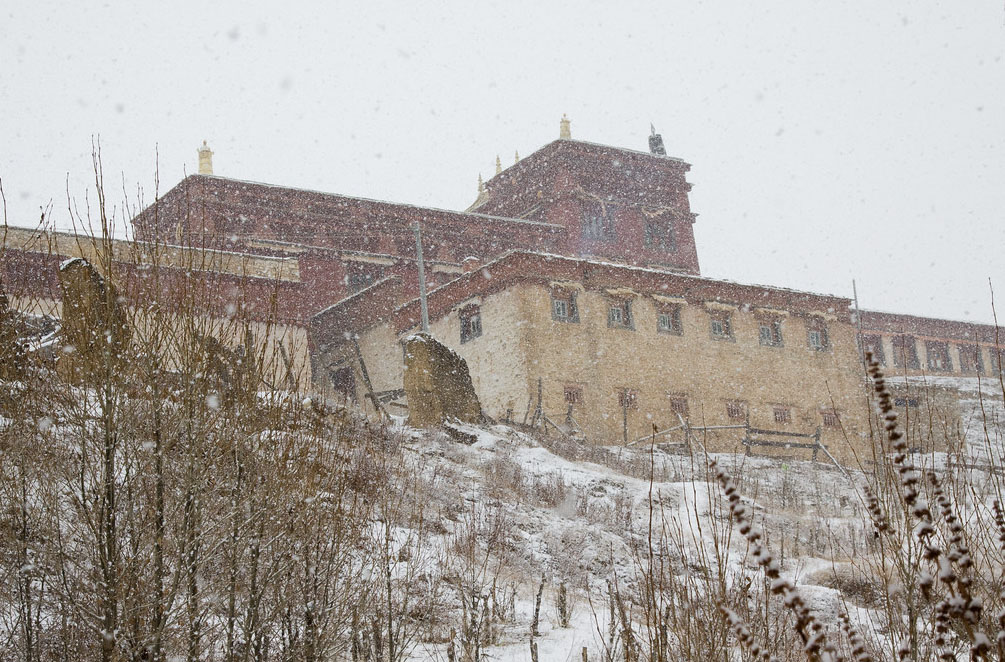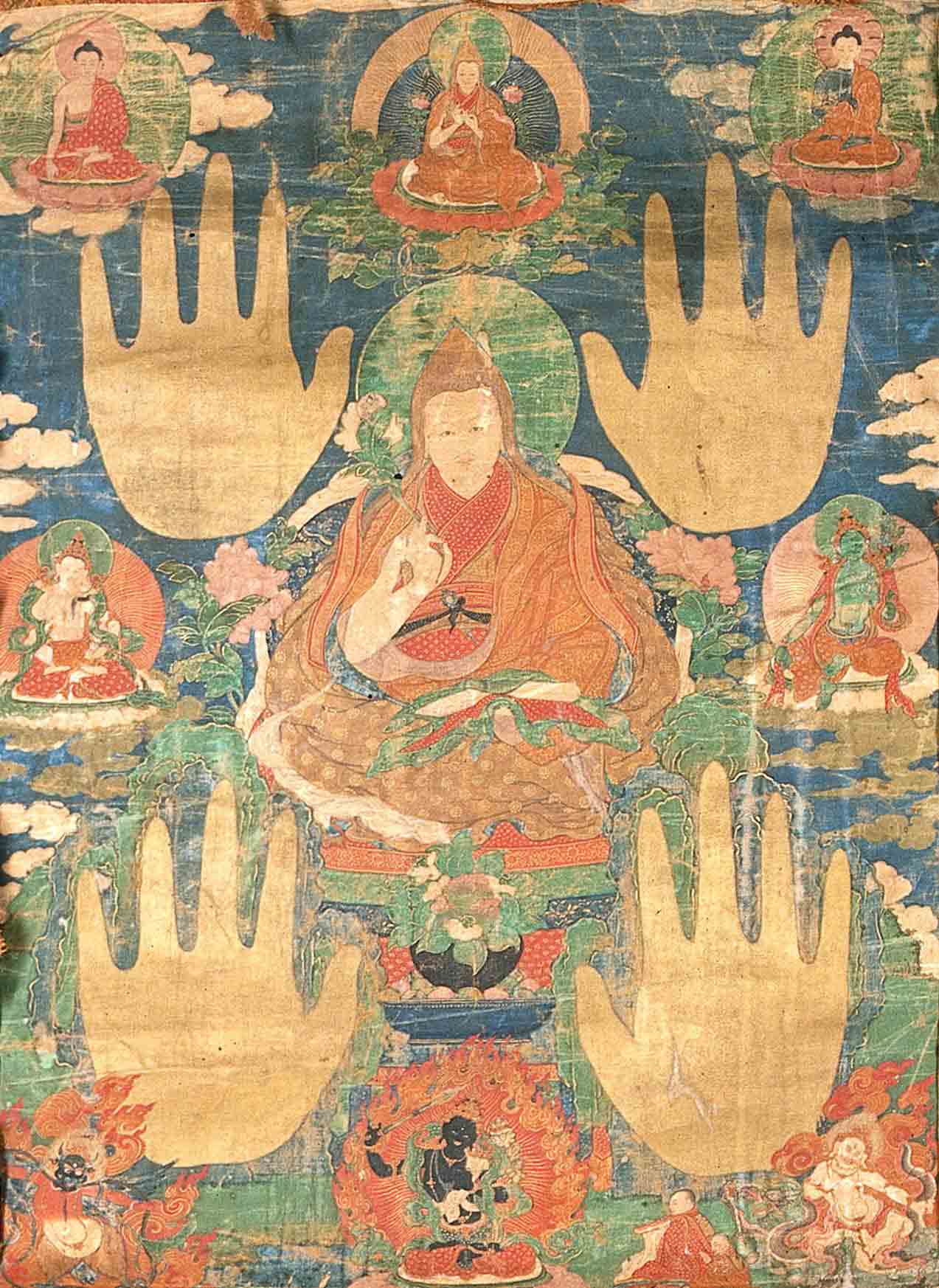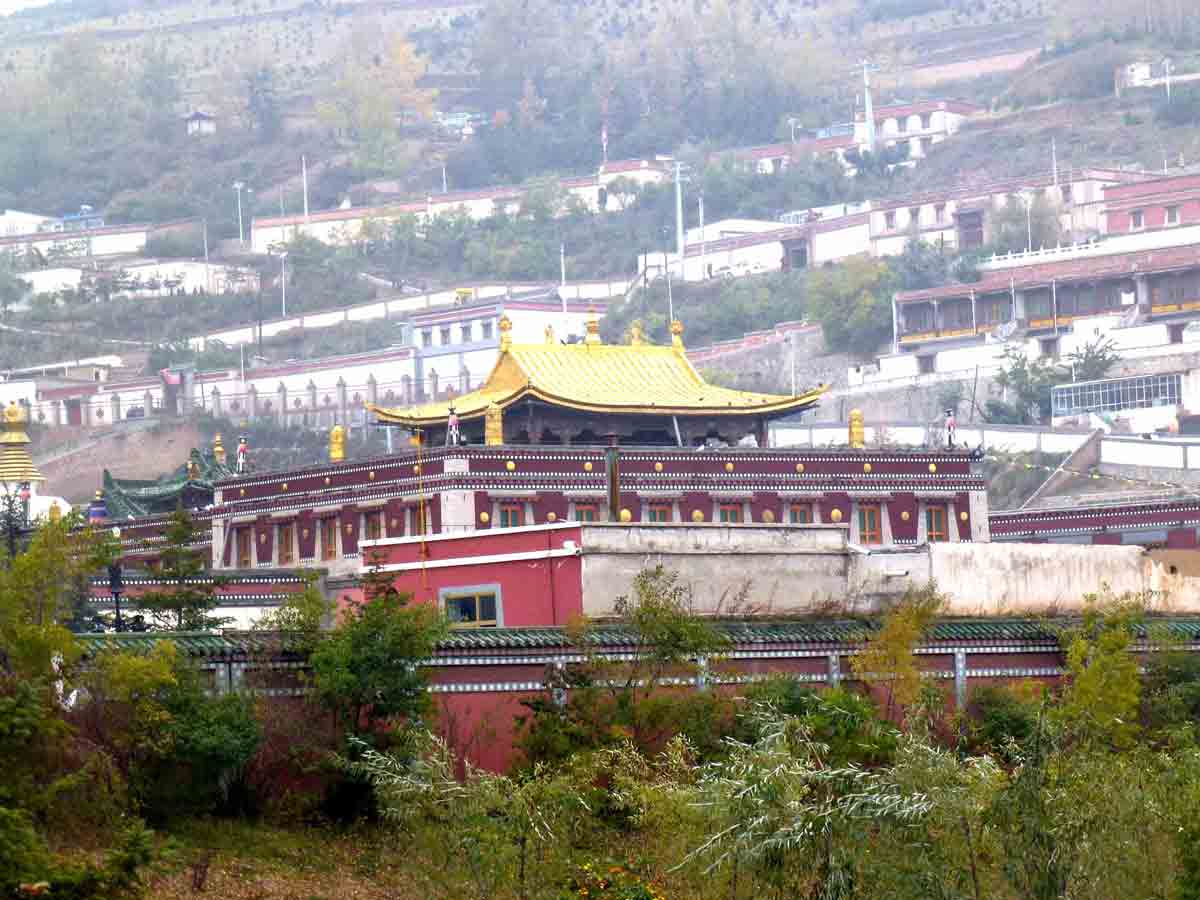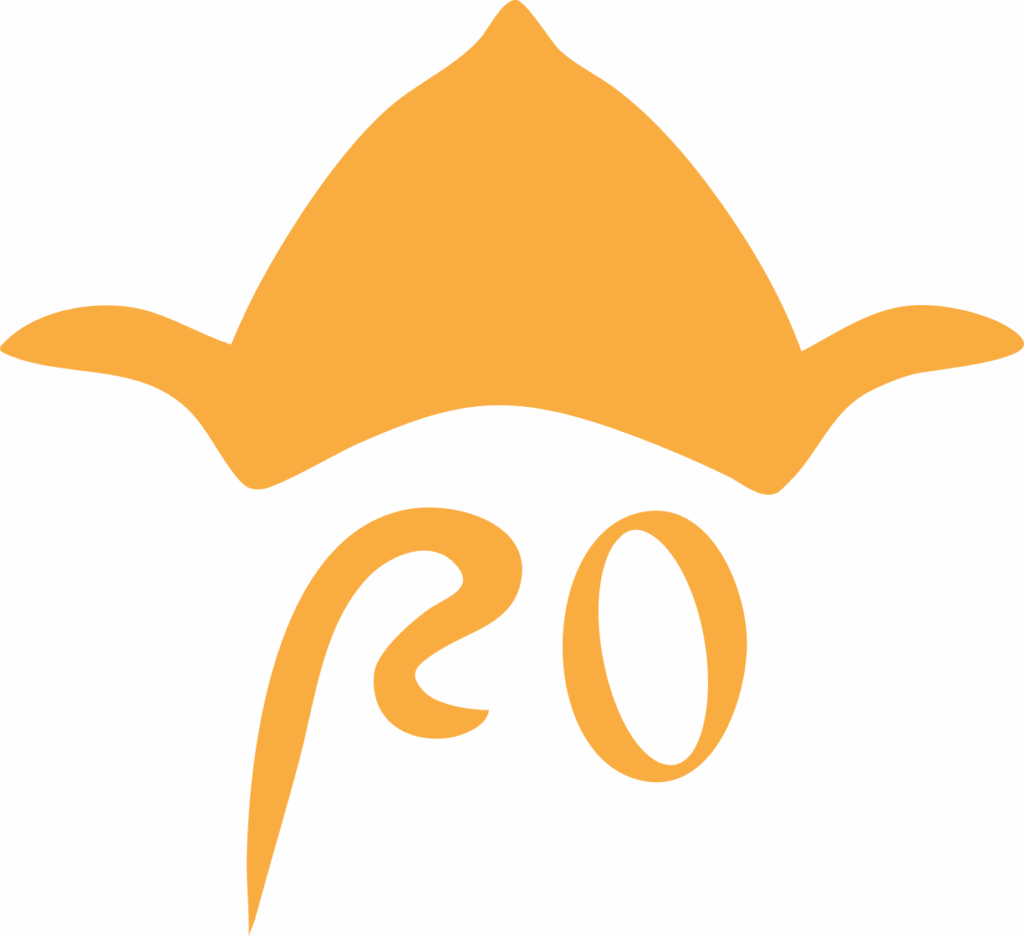
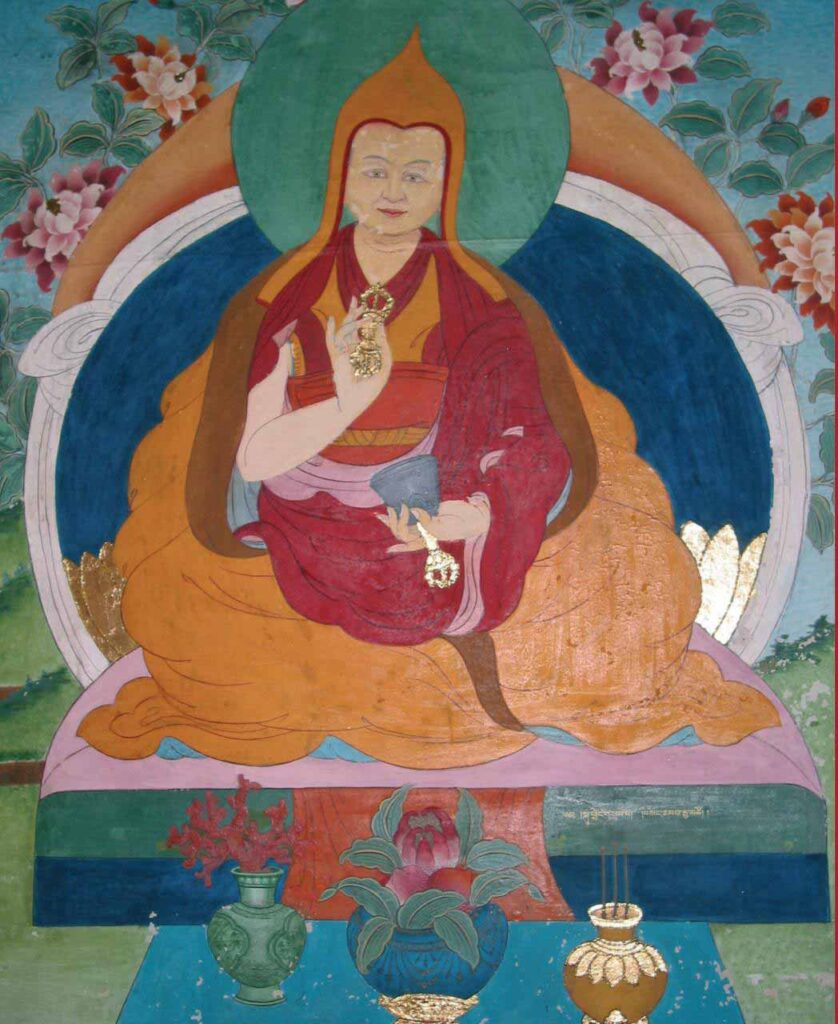
The Third Dalai Lama – Sonam Gyatso (1543–1588)
Sonam Gyatso, the third person in the Dalai Lama lineage, was born in 1543 in Tolung near Lhasa, to Namgyal Drakpa and Pelzom Bhuti, a prominent family. In 1546, at the age of three, he was recognized as the reincarnation of the Second Dalai Lama, Gedun Gyatso, by Sonam Dakpa Gyaltsen, the ruler of Tibet, and the Third Panchen Lama.
At age seven, he took novice vows from the Panchen Lama and was given the name Sonam Gyatso. He received full ordination (Gelong vows) at twenty-two from Gelek Palsang. A gifted scholar and practitioner, Sonam Gyatso rose quickly through the monastic ranks.
In 1552, he became abbot of Drepung Monastery and, in 1558, abbot of Sera Monastery—two of Tibet’s most influential Gelugpa institutions. In 1574, he founded Phende Lekshe Ling, which later became Namgyal Monastery, the personal monastery of the Dalai Lamas.
One of his most consequential achievements came in 1578, when he met Altan Khan, a powerful Mongol ruler. Their historic meeting forged a strong spiritual and political alliance between Tibet and Mongolia. In honor of Sonam Gyatso’s wisdom, Altan Khan conferred upon him the title “Dalai Lama”, meaning “Ocean of Wisdom.” Although he was the third in the lineage, the title was applied retroactively to his predecessors. In return, Sonam Gyatso honored Altan Khan with the title “Brahma,” or “King of Religion.”
He also expanded Tibetan Buddhism into Mongolian territories and played a pivotal role in promoting the Gelugpa school. He founded important monasteries, including Kumbum Monastery in Amdo, the birthplace of Tsongkhapa, and Lithang Monastery in Kham. His prolific writings remain influential in Tibetan Buddhist philosophy.
Sonam Gyatso passed away in Mongolia in 1588 at the age of 45. His life marked a turning point in Tibetan-Mongol relations and significantly extended the reach of Tibetan Buddhism beyond the Himalayas, solidifying the spiritual authority of the Dalai Lama institution.
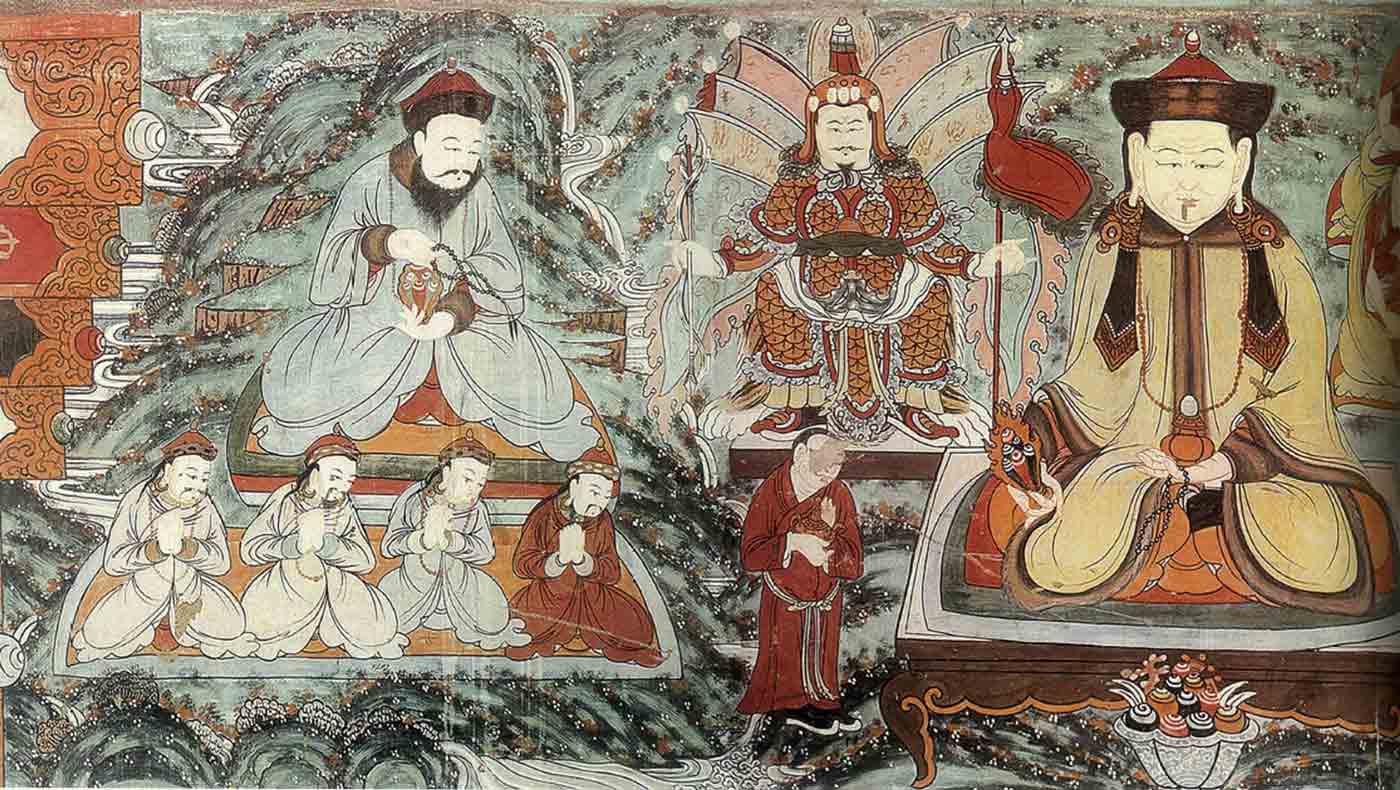
Altan Khan.
